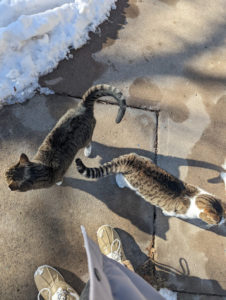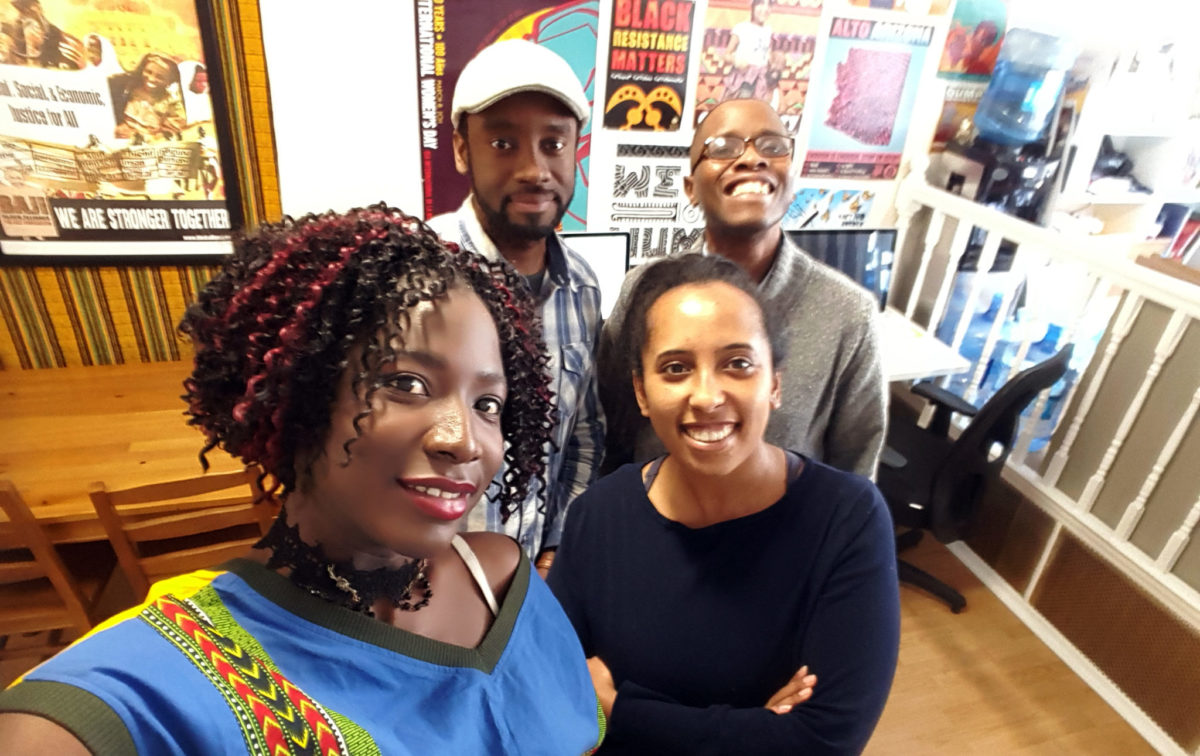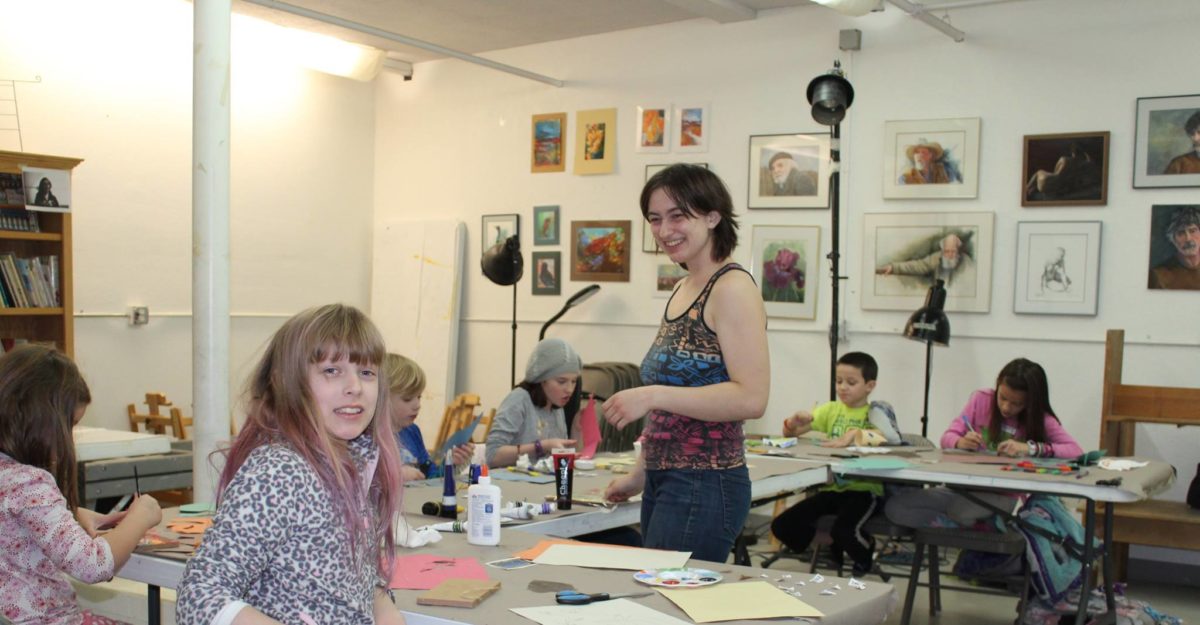When I got on a plane for the first time in my life, my destination being rural Iowa, I had no idea what to expect. I was thrilled at the opportunity, of course; it uniquely fit into my educational goals like no other co-op that I had looked at. At Scattergood, I would not only have the opportunity to work as a teacher, but as an English as a Second

View from the plane as I landed at the Cedar Rapids airport
Language (ESL) teacher. My plan, after I graduate from Antioch, is to go abroad and travel and work as an ESL instructor across the world, so this was an exciting opportunity.
I arrived at Scattergood Friends School a few days before classes started for the winter term. I had the opportunity to go over my schedule with my supervisor and call a previous ESL instructor for advice on teaching the subject. I got a tentative lesson plan together, and I went to my first class on Monday.
My position at Scattergood Friends School wasn’t my first experience with teaching, and certainly not with tutoring, so I did have enough confidence to get myself started. My first ESL class was mostly conversational; I assessed my student’s skills and ascertained the areas that she most wanted to improve on. We talked about the differences between the COVID-19 response in France, her home country, and the United States: unlike the USA’s lackluster public health politics, France requires vaccine cards to even enter a grocery store. I asked her about her experiences with English, what she was hoping to gain, whether she planned to attend university in the United States. The one-on-one orientation of the class allowed for us to get to know each other and become comfortable; this comfort, in turn, improved both the teaching and the learning experience, making the student comfortable asking questions.
My other classes went much the same way, and the rest of my week was full of busywork: cataloging books for the library, writing lesson plans, attending meetings. Many of the things I did, I was doing for the first time. I met my middle school class on Tuesday and spent much of the class talking to them to determine what they wanted to learn. Some had a bit of programming experience already, but most didn’t, and we decided to begin by learning HTML/CSS: the fundamental languages of web development.

Scattergood’s campus cats walking with me to class
I got into a rhythm. I worked in the library five days a week. For a week or two, I specifically worked in the basement library, sorting through class sets to discard old or overly-annotated copies and catalog the rest. This work was repetitive, but it wasn’t boring. I enjoyed organizing the shelves and encountering such a variety of interesting different books: nothing will multiply one’s to-be-read list like cataloging a small library of books!

The reading area in Scattergood’s library illuminated by the afternoon sun
Three days a week, I met with my ESL student. We spent a significant amount of time reading aloud; we started with The Mysterious Island by Jules Verne and switched to The Hobbit by J.R.R. Tolkien. The student had read The Hobbit in French, but never in English, so it was exciting to her to read it in this new language. I would read a section aloud so that she could hear the pronunciation of new vocabulary and familiarize herself with a comfortable cadence of speaking; she would read after me to practice her own speaking skills. As she improved, we switched to her reading aloud on her own. We also employed various other exercises to improve her English abilities: transcribing English podcasts and YouTube videos to practice listening, using a vocabulary workbook to learn new vocabulary words, practicing conversational skills by simply making conversation.
On Tuesdays and Thursdays, I met with my middle school class to teach them HTML and CSS. We used the Khan Academy course for those languages. Although we started out learning together, with the Khan videos playing on the SmartBoard for the whole class to follow along with, students diverged once we reached the first coding prompt. Some students went very quickly and shot ahead, taking the rest of the course on their own, while some students worked more slowly, dedicating much more time to each project. It was intimidating to juggle such a wide variety of students’ skills, aptitudes, needs, and projects, but the students were passionately involved, asking questions and working diligently. By the end of the first week of February, students began creating their own webpages using the skills they had learned in the previous few weeks.

One of many kind anonymous admirations shared at the weekly community meeting
The community at Scattergood Friends School reminded me of Antioch, although it was, if possible, even more close-knit. The people there all value each other, from students to staff to faculty, as members of a beloved community. They prioritize not only students’ education, but also their individual well-being and their responsibilities to the common good. Scattergood employs a work program, known on campus as the crew program, wherein every single student and staff member dedicates a certain amount of time each week to campus chores. From cataloging library books, as I did, to shoveling snow or cleaning up after meals, everyone participates in safeguarding the common good. I think that everyone could learn something from that.
With my work at Scattergood, I felt like I was truly making a difference. I could see my students improving as I taught them; I could sense their excitement about what they learned. There is nothing more gratifying, in my opinion, than helping someone to understand something.






